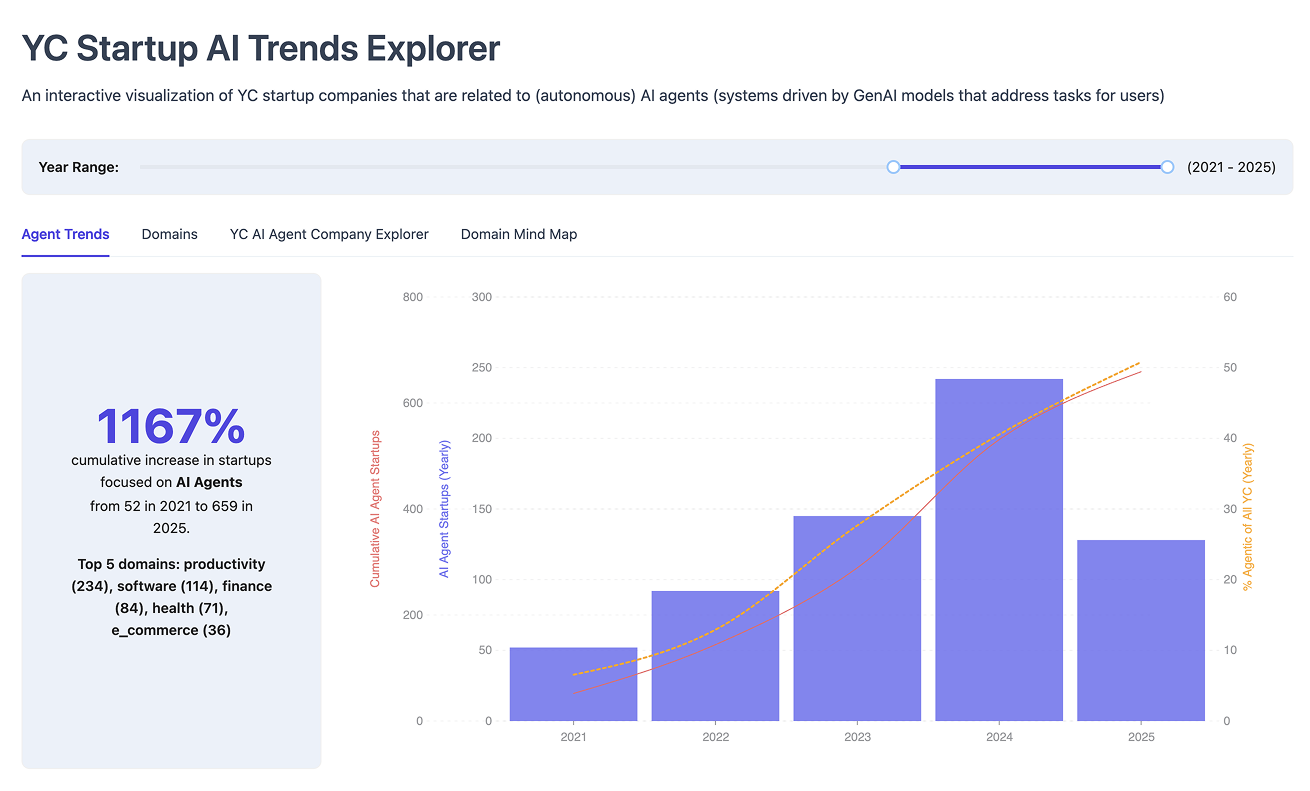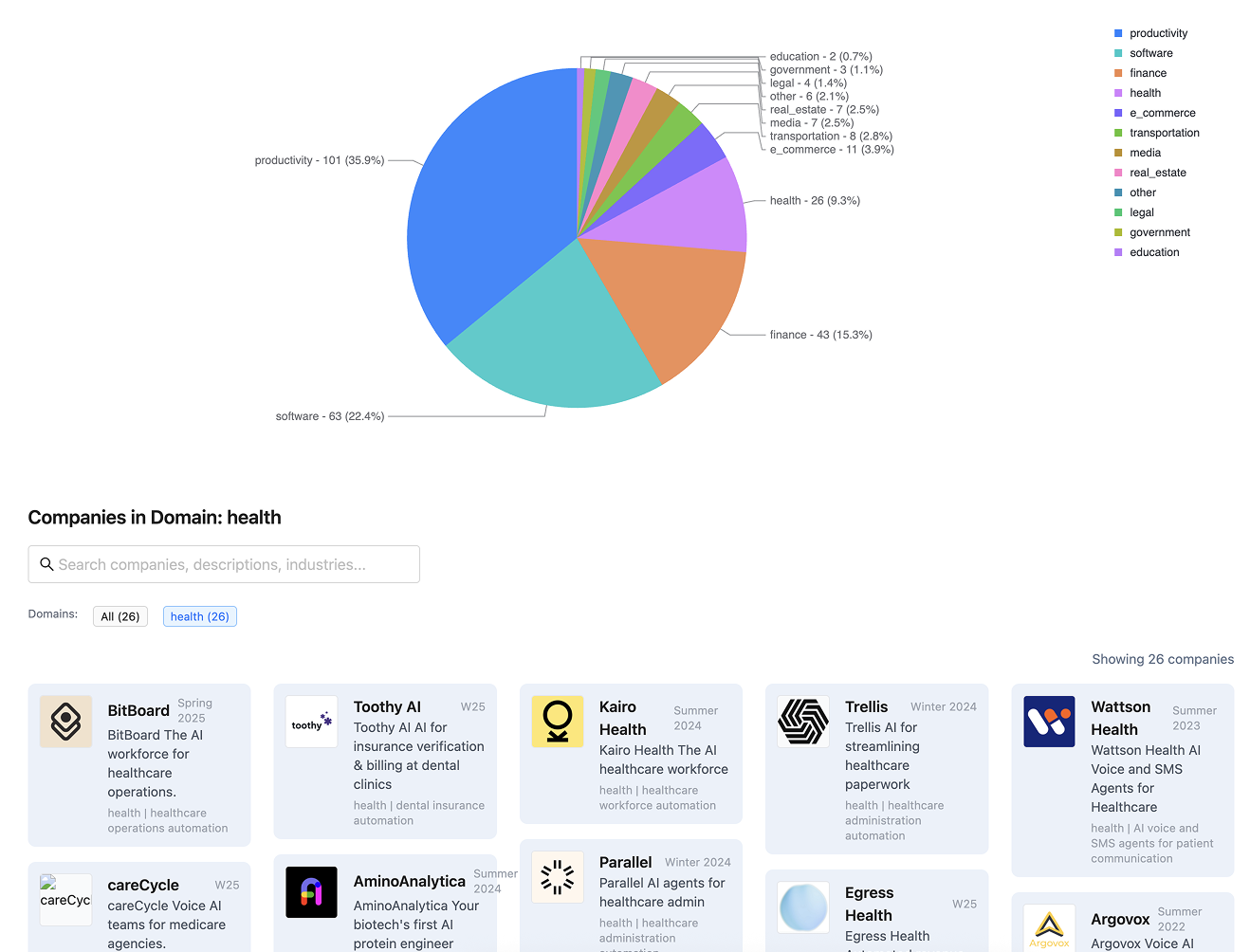What Types of Agents are Companies Building? A YCombinator Analysis
#41 | An in-depth analysis on Agentic AI startups using data from the YCombinator startup accelerator.
Hey Victor, what types of use cases are being built with AI agents?
I get this question a lot.
Sometime in December 2023, I had contributed to AutoGen framework for a few months (yes, I know its 2.5 years ago - time flies!) and I was mulling the idea of writing a book on multiagent systems.
One of the first things I figured I needed to do was to start a rolling collection of how the budding community at the time was exploring multi-agent systems and the kinds of applications they were exploring. The rough plan was to conduct an indepth analysis of GitHub repos that had dependencies on frameworks like AutoGen, LangChain/LangGraph etc, track public data/news in the space (see here) and track the growing list of companies building agentic solutions.
This post addresses the 3rd bit - and provides an in-depth analysis using data from YCombinator (YC) — a leading startup accelerator.
TL;DR: I analyzed data on 5,304 YC companies. Results suggest 726 building true AI agents (13.7%) - a setup where AI drives tools that accomplish tasks on the user’s behalf.
Agent-focused companies in YC cohorts have grown from 5.9% in 2020 to 50.8% in 2025. Three core value propositions emerge from clustering analysis: productivity enhancement for knowledge workers, business process automation (with some nuance), and healthcare operations.
Caveat:
While the YC's portfolio is but a limited slice of all companies out there (with biases toward scalable tech companies and Silicon Valley networks), it however provides insights into the domains that are being addressed, the argued value proposition and the rate of growth.
To make this data easy to explore, I built an interactive tool that visualizes key trends over time e.g., percentage of YC companies per year that are agent-focuses, distribution of domains (and subdomains), a mindmap of the space , all with the ability to drill down and look at company descriptions and value propositions.
Code for the analysis and an interactive visualization tool for exploring the data is provided in the post below.
Keep reading with a 7-day free trial
Subscribe to Designing with AI to keep reading this post and get 7 days of free access to the full post archives.




